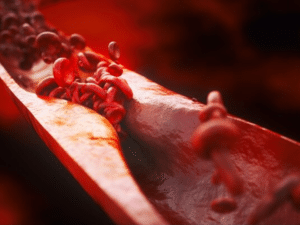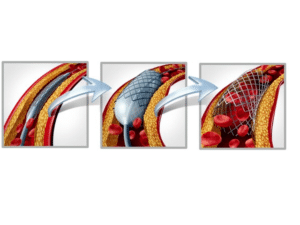Coronary Angioplasty
Coronary Angioplasty in Iran
Best coronary angioplasty surgeon in Iran
or the best coronary angioplasty in Iran, choose from our recommended list of top-rated clinics. These clinics provide expert care and advanced techniques for coronary angioplasty procedures, with experienced doctors and state-of-the-art facilities to ensure the best possible outcome. You can expect personalized attention and the highest level of care at these clinics, which are known for their commitment to patient safety and satisfaction. Choose one of these top-rated clinics for the best care for your coronary angioplasty procedure.

Coronary angioplasty cost in Iran
There is a significant difference between the cost of coronary angioplasty in Iran and other countries. The most important factors for its low price of it in Iran are:
- A large number of coronary angioplasty hospitals in Iran.
- A large number of applicants for coronary angioplasty in Iran
Coronary angioplasty cost in Iran varies depending on the coronary angioplasty and the hospital. The average cost of coronary angioplasty in Iran is $2500.
Coronary angioplasty cost in Iran in comparison with other countries
This surgery costs $28000 in the U.S., $25000 in Europe, $18000 in Thailand, and $5500 in Turkey.
Best coronary angioplasty surgeon in Iran
More than 70.000 heart surgeries are being performed each year in Iran. Experienced Iranian doctors with excellent records are performing the operations.
One of the most important factors for choosing a good surgeon for coronary angioplasty in Iran is a doctor has done many coronary angioplasties.
You can find the best doctors for coronary angioplasty in Iran on our website by following their different experiences.
Many patients travel to Iran for coronary angioplasty. One of the reasons for this matter is Iranian specialists and surgeons who have high surgery success rates.
- Low Cost of coronary angioplasty in Iran
- Low cost of accommodation in Iran
- Well experienced doctors
- The high number of coronary angioplasties in Iran
Coronary angioplasty hospitals accordance with today’s European standards are performing the highest quality operations in Iran. Another reason for coronary angioplasty in Iran is its lower cost compared to other countries.
How long should I stay for coronary angioplasty in Iran?

About Coronary Angioplasty
Angioplasty alone or with intracoronary stenting with a professional medical team and equipment can provide benefits for patients, some of them are:
- Improvement of blood circulation in the heart through the opening of tight and blocked arteries
- Local anesthesia has lower complications than general anesthesia
- Patients can go back to regular activity after a short time
- This method can help to relieve angina pain, the prognosis for the relief of unstable angina and minimize or eliminate the risk of cardiac arrest
- The angioplasty significantly reduced the number of patients who need open heart surgery for coronary artery bypassing to less than 1%.
Types of coronary angioplasty
- Balloon angioplasty: A specially designed catheter with a tiny balloon is carefully guided through the artery to the blockage
- Carotid artery angioplasty: Carotid angioplasty with stenting is a minimally invasive procedure in which a tiny hollow tube, or catheter, is advanced from a blood vessel in the groin to the carotid arteries.
- Cerebral angioplasty: Cerebral angioplasty is similar to a widely used cardiology procedure and is used to open partially blocked vertebral and carotid arteries in the neck.
- Coronary artery stent: A tiny coil is expanded inside the blocked artery to open the blocked area and is left in place to keep the artery open.
- Laser angioplasty: A laser is used to “vaporize” the blockage in the artery.
- PTA of the Femoral Artery: Percutaneous transluminal angioplasty is a newer, minimally invasive (without a large incision) procedure used to open the blocked or narrowed femoral artery and to restore arterial blood flow to the lower leg without open vascular surgery.
Recommended for
- Patients with narrowed or hardened arteries around the heart
- Patients with coronary heart disease or angina
- Patients who need emergency treatment following a heart attack
Before Coronary Angioplasty
Some tests are required before the surgery to allow the surgeon to control the probable risks. The doctor usually performs angiography before angioplasty. The patients are admitted to the hospital the night before, and since midnight drinking or eating is forbidden. The doctor prescribes the necessary instructions. It is also necessary to take aspirin and other medicines to dilute the blood, which is prescribed by the doctor before surgery.
During Coronary Angioplasty
The most common site for catheter entrance is the groin, but either arm or wrist can be used, too. After administering local anesthesia in the area, a small incision is performed. Patients should try to remain and listen to what the doctor asks. They might need to move during the procedure. As the balloon temporarily blocks blood flow to a part of the heart, they might experience a little chest pain, which is a normal part of the procedure.
Recovery
The doctor usually prescribes some medicines that should be taken as it is scheduled for the patient. Patients have to get a week to recuperate before returning to work. Also, it is highly recommended to stop smoking, lower blood cholesterol levels, keep weight within range, control other diseases such as diabetes or hypertension, and do exercise regularly.
FAQ
Yes, Iran has highly skilled doctors and modern medical facilities that ensure safe and successful procedures.
The cost of coronary angioplasty in Iran is significantly lower than in many other countries, making it an affordable option for patients.
Recovery time varies depending on the individual, but most patients can return to normal activities within a few days to a week after the procedure.